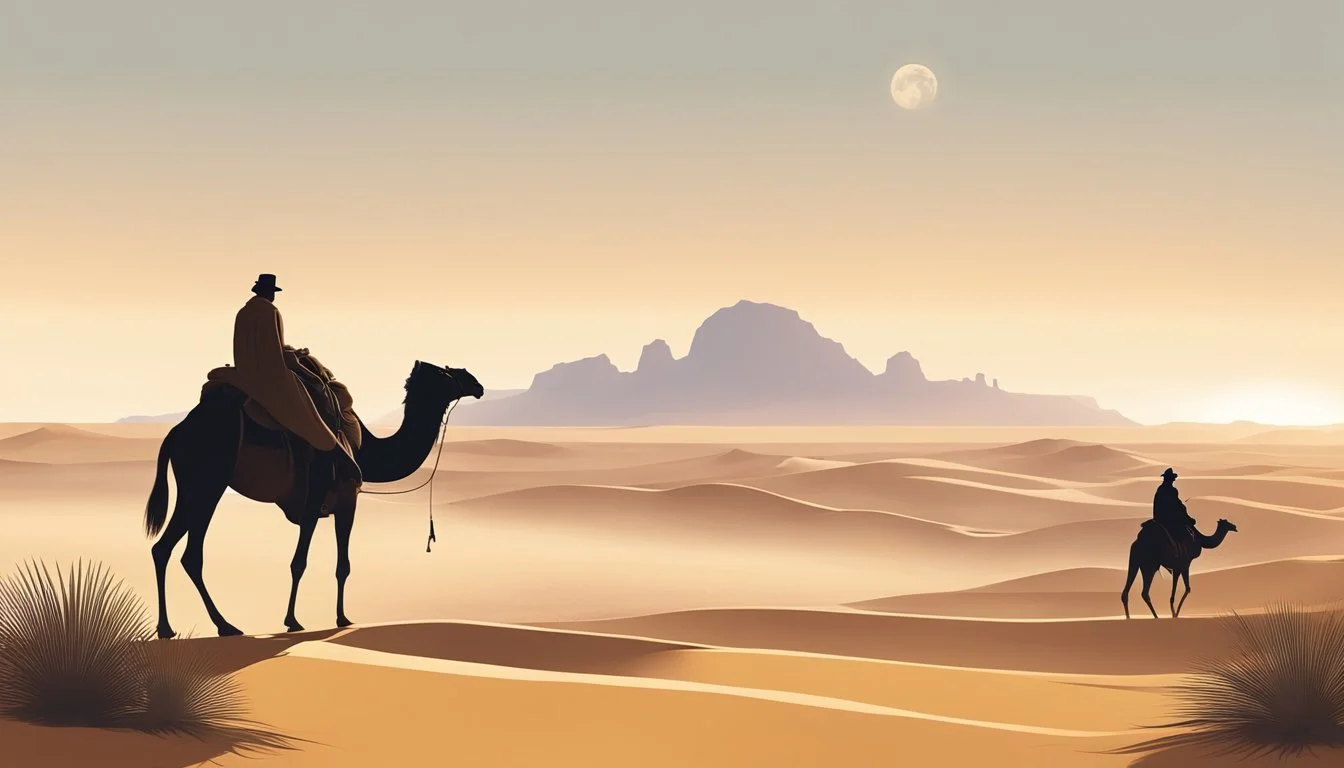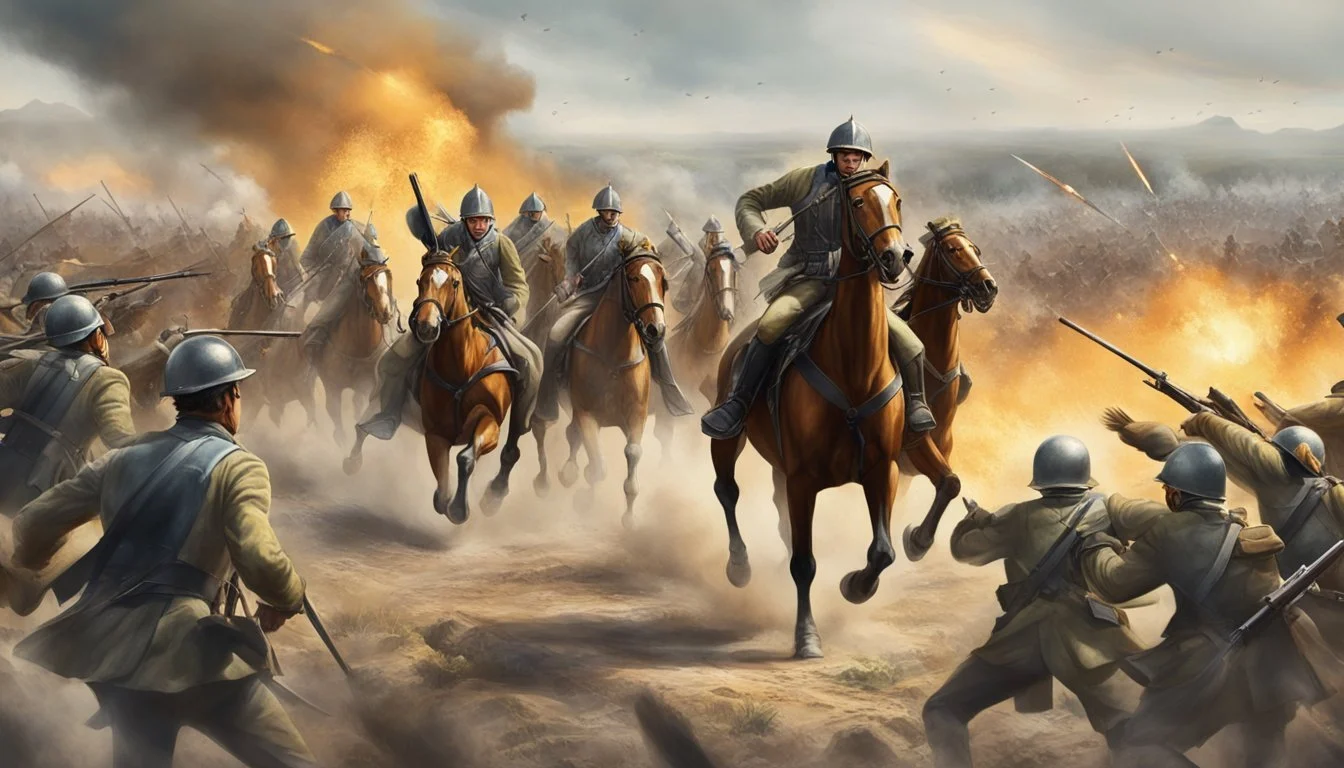7 Films Analyzing the Causes and Consequences of World War I
A Critical Cinematic Exploration
World War I profoundly shaped the 20th century, leaving an indelible mark on global politics, society, and culture. Filmmakers have long been drawn to this pivotal conflict, exploring its complex causes and far-reaching consequences through the medium of cinema.
These seven films offer unique perspectives on the origins and aftermath of the Great War, providing viewers with thought-provoking insights into this transformative period in history. From intimate portrayals of soldiers' experiences to sweeping narratives of geopolitical upheaval, each movie sheds light on different aspects of the war that changed the course of human events.
1) Paths of Glory
Stanley Kubrick's 1957 film "Paths of Glory" offers a scathing critique of military leadership during World War I. Set in the trenches of France, the movie follows Colonel Dax as he defends three soldiers accused of cowardice.
The film exposes the callousness of high-ranking officers who view their men as expendable. It highlights the disconnect between those making decisions and those facing the consequences on the front lines.
Kubrick's direction emphasizes the contrast between the opulent château housing the generals and the grim reality of the trenches. This visual juxtaposition underscores the film's themes of class divide and injustice within the military hierarchy.
"Paths of Glory" explores the psychological toll of war on soldiers. It shows how the pressure to succeed in impossible missions can lead to tragic outcomes and unjust punishments.
The film's powerful courtroom scenes reveal the facade of military justice. They demonstrate how predetermined outcomes often override truth and fairness in times of war.
2) All Quiet on the Western Front
All Quiet on the Western Front stands as a landmark film in depicting the harsh realities of World War I. Based on Erich Maria Remarque's novel, it follows a group of young German soldiers as they experience the brutalities of trench warfare.
The 1930 adaptation, directed by Lewis Milestone, won two Academy Awards and garnered critical acclaim for its unflinching portrayal of combat. It showcases the psychological toll of war on soldiers, challenging romanticized notions of heroism and patriotism.
The film's power lies in its focus on the individual experiences of soldiers rather than grand military strategies. It illustrates the futility of war through the gradual disillusionment of its protagonists.
A 2022 German-language remake brought the story to a new generation. This version emphasizes the senselessness of conflict and the desperation of soldiers in the war's final days.
Both adaptations of All Quiet on the Western Front serve as poignant reminders of war's devastating impact on human lives. They contribute significantly to understanding the causes and consequences of World War I through a deeply personal lens.
3) Lawrence of Arabia
Lawrence of Arabia, directed by David Lean in 1962, offers a sweeping cinematic portrayal of T.E. Lawrence's experiences during World War I. The film explores the complex political and cultural dynamics of the Arab Revolt against the Ottoman Empire.
Set against the backdrop of the Middle Eastern theater, the movie delves into Lawrence's role as a British liaison officer. It depicts his efforts to unite Arab tribes in the fight against Ottoman forces, aligning with British interests in the region.
The film examines the motivations behind the Arab Revolt and its impact on the broader conflict. It showcases the strategic importance of the Middle East during World War I, particularly in relation to imperial ambitions and control over resources.
Through Lawrence's journey, the movie highlights the clash between Western and Arab cultures. It portrays the challenges of navigating different value systems and political agendas in a time of war.
Lawrence of Arabia also touches on themes of identity and loyalty. It presents Lawrence's internal struggle as he becomes increasingly invested in the Arab cause, sometimes at odds with his British superiors.
4) Gallipoli
Peter Weir's 1981 film "Gallipoli" offers a poignant examination of Australia's involvement in World War I. The movie follows two young Australian men who enlist to fight in the Gallipoli Campaign of 1915.
Weir's film portrays the naivety and enthusiasm of youth confronted with the harsh realities of war. It highlights the sense of adventure that initially drew many to enlist, contrasting it with the brutal consequences of conflict.
"Gallipoli" explores themes of friendship, national identity, and the futility of war. The film's depiction of the campaign emphasizes the strategic failures and miscommunications that led to significant loss of life.
Through its characters, the movie examines different attitudes towards the war. Some view it as a noble cause, while others question Australia's involvement in a distant conflict.
The film's portrayal of the Gallipoli Campaign has significantly influenced public perception of this historical event. It has become an important cultural touchstone in Australia, reinforcing the Anzac legend and national mythology.
5) War Horse
Steven Spielberg's "War Horse" offers a unique perspective on World War I through the journey of a horse named Joey. The film begins in rural England, where Joey forms a strong bond with a young man named Albert.
As the war unfolds, Joey is sold to the British cavalry and sent to France. The horse's experiences on both sides of the conflict provide a poignant look at the war's impact on soldiers and civilians alike.
Through Joey's eyes, viewers witness the transition from traditional cavalry warfare to the mechanized brutality of trench combat. The film depicts the harsh realities of the Western Front, including the use of tanks and machine guns.
"War Horse" also explores themes of loyalty, friendship, and the shared humanity that transcends national boundaries. Joey's encounters with various individuals during his journey highlight the personal costs of the war.
Spielberg's direction and cinematography capture the sweeping landscapes of rural England and the war-torn fields of France. The film's visual style evokes both the pastoral beauty of pre-war Europe and the devastating destruction brought by the conflict.
6) A Very Long Engagement
"A Very Long Engagement" is a 2004 French film directed by Jean-Pierre Jeunet. Set during and after World War I, the movie explores the conflict's impact on individuals and society.
The story follows Mathilde, a young woman searching for her fiancé who was supposedly killed in action. Through her investigation, the film reveals the brutal realities of trench warfare and its lasting effects on soldiers and civilians alike.
Jeunet's visual style brings the war-torn landscape to life, showcasing the stark contrast between the muddy, violent trenches and the picturesque French countryside. This juxtaposition emphasizes the war's far-reaching consequences.
The film delves into themes of hope, perseverance, and the human cost of war. It portrays the physical and psychological toll on soldiers, as well as the grief and uncertainty experienced by those left behind.
"A Very Long Engagement" offers a unique perspective on World War I by focusing on personal stories rather than grand military strategies. It highlights the war's long-term effects on relationships, communities, and individual lives.
7) The African Queen
"The African Queen" is a 1951 adventure film set against the backdrop of World War I in German East Africa. Directed by John Huston, the movie stars Humphrey Bogart and Katharine Hepburn.
The film explores the impact of the war on individuals far from the European front. It follows Rose Sayer, a British missionary, and Charlie Allnut, a Canadian boat captain, as they navigate the dangers of wartime Africa.
Their journey down the Ulanga River in the ramshackle boat "African Queen" serves as a metaphor for the chaos and unpredictability of war. The characters' mission to destroy a German gunboat reflects the broader conflict's reach into colonial territories.
The film touches on themes of duty, sacrifice, and unlikely alliances forged in wartime. It portrays how global conflicts can thrust ordinary people into extraordinary circumstances.
"The African Queen" offers a unique perspective on World War I, focusing on its effects in colonial Africa rather than the trenches of Europe. This approach highlights the war's far-reaching consequences and its impact on diverse populations across the globe.
Historical Context of World War I
World War I reshaped the global landscape in the early 20th century. The conflict's roots and major engagements set the stage for unprecedented destruction and loss of life.
Causes of the War
The assassination of Archduke Franz Ferdinand in Sarajevo ignited the powder keg of Europe in 1914. This event catalyzed long-simmering tensions between major powers.
Nationalism fueled rivalries and territorial ambitions among European nations. The arms race, particularly naval buildup between Britain and Germany, heightened tensions.
Intricate alliances divided Europe into two camps: the Triple Alliance and the Triple Entente. These pacts meant a localized conflict could quickly escalate into a wider war.
Imperialism and competition for colonies also played a role. European powers sought to expand their global influence and secure resources.
Major Battles and Fronts
The Western Front became synonymous with trench warfare and stalemate. The Battle of the Somme and Verdun saw massive casualties for minimal territorial gains.
On the Eastern Front, Russia faced Germany and Austria-Hungary. The Battle of Tannenberg marked a significant German victory early in the war.
The Gallipoli Campaign aimed to knock the Ottoman Empire out of the war but ended in Allied failure. This campaign highlighted the global nature of the conflict.
Naval battles like Jutland demonstrated the importance of sea power. Unrestricted submarine warfare eventually drew the United States into the war in 1917.
The introduction of new technologies such as tanks, aircraft, and poison gas changed warfare forever. These innovations led to increased lethality on the battlefield.
Cultural Impact of World War I
World War I profoundly transformed culture, art, and society across the globe. The conflict's immense scale and devastating effects sparked new artistic movements and altered social structures.
Literature and Art Movements
The war inspired a wave of creative expression. Poets like Wilfred Owen and Siegfried Sassoon captured the horrors of trench warfare in their verses. Novels such as Erich Maria Remarque's "All Quiet on the Western Front" portrayed the war's brutality and futility.
In visual arts, movements like Dada emerged as responses to the conflict. Artists rejected traditional aesthetics, embracing absurdism and chaos. Surrealism followed, exploring the subconscious mind and dreams.
Film became a powerful medium for depicting the war. Early works like "The Battle of the Somme" (1916) brought battlefield footage to audiences. Later films critiqued the war's impact, reflecting changing attitudes.
Societal Changes
The war redefined gender roles. Women entered the workforce in unprecedented numbers, filling jobs left vacant by men at the front. This shift contributed to the women's suffrage movement gaining momentum in many countries.
Class structures began to erode. The shared experiences of soldiers from different backgrounds fostered a sense of unity. In some nations, this led to increased social mobility and political reforms.
The conflict accelerated technological advancements. New inventions developed for military use, like radio and aircraft, soon found civilian applications. These innovations reshaped daily life and communication in the post-war world.




